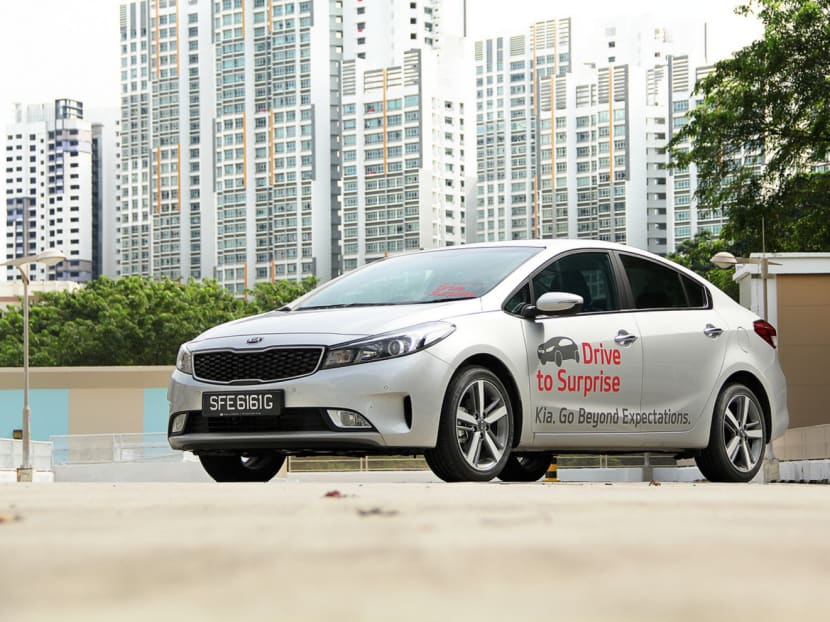The tiger’s tale
SINGAPORE — Peter Schreyer sounds surprised when l tell him over the phone that Korea has a huge influence on young Singaporeans. They dress and style their hair like K-pop and K-drama idols, he’s fascinated to learn, and their social lives play out on Samsung phones.


SINGAPORE — Peter Schreyer sounds surprised when l tell him over the phone that Korea has a huge influence on young Singaporeans. They dress and style their hair like K-pop and K-drama idols, he’s fascinated to learn, and their social lives play out on Samsung phones.
Yet, Korea has had quite an influence on the award-winning design chief of Hyundai-Kia, too.
“What is very interesting to me in Korea is things like their special culture, art scene, architecture and craftsmanship,” he said.
Having worked for a Korean company since 2006, when he joined Kia as its chief design officer, Schreyer said he has been struck by how innovative the people there are. “Somehow, this reflects in the development of our cars. And I think this is a great asset to us because other companies don’t have that,” he said.
The latest of Schreyer’s creations to hit town is the facelifted Forte K3. These days he’s busy overseeing Hyundai-Kia’s expansion, which includes the group’s foray into the luxury world with its new Genesis brand.
LOWER-SPECTRUM THRILLS
But while he says designing expensive cars is enjoyable, he still finds satisfaction at the lower end of the price scale, where cars like the Forte K3 are found.
He starts by thinking about the people who drive his cars, he said. “How do they live? What do they expect? They also spend a lot of money, even if it’s a small, cheaper car, but it’s their car. They want to have a rewarding product that they are proud of,” said Schreyer.
Engineers can measure their success by the stopwatch, but designers have something altogether more subjective to rely on. “I’m very happy when I see somebody in a car that I have designed, and I see that they are proud of what they’re driving,” he said.
That seems like a simple ambition, but then Schreyer had already left his mark on car design before he even joined Kia. He joined the Korean company from the Volkswagen group, where he had created such icons as the first Audi TT and VW’s new Beetle.
But it’s at Kia where he has really made an impact on cars meant for a much wider audience, transforming the brand’s anonymous-looking machines into sculptures that have won awards for their good looks.
“They had some good cars and there was one car, the Sorento, which design-wise was actually quite good,” he says, of his impressions of Kia when he first joined. “But if you looked at the entire product range at that time, it was kind of neutral, and the cars did not have an identity.”
NOSE OF THE TIGER
To address that, one of the first things he did was to create the “tiger nose” grille that now adorns every Kia, giving them all a family resemblance. It’s something he compares to BMW’s signature double-kidney grille, a design element that makes its products instantly recognisable.
“The one thing that we didn’t have at that time was, somehow, a front face for Kia,” he said.
But inspiration didn’t hit right away. Schreyer said he struggled for a time to come up with a suitable graphic. Under pressure to produce his first concept car for Kia, he was working with black and chrome tape, “just playing around”, when he came up with a grille shape that has two tabs in the middle.
When describing it to his team, he told them: “Please think of an expression of an animal like a tiger. Look at the tiger’s face, how three-dimensional the nose is, and the gaze of a tiger, the way it looks at you and how alert it is.”
The image stuck, and that is how one of Kia’s signature design elements got its label. “The name came after the fact,” he said.
Perhaps it should not surprise anyone that Schreyer would rely on such a fierce animal to convey his ideas on Kia’s grille design, since he is made of pretty stern stuff himself.
NO GUTS, NO GLORY
He once saw “No guts, no glory” painted on a World War II aircraft, and the slogan left a lasting impression on him. As a boy he dreamt of being a competitive skier, and in his youth he competed at skeleton sledding, a sport that sounds insanely dangerous.
“It’s something that is maybe very exotic for people in Singapore because you don’t have snow,” he chuckles. “It’s quite exciting because you’re travelling at more than 100kmh, up to 120kmh at some tracks, with your nose maybe 3cm above the ice, and it’s quite an interesting perspective.”
It sounds terrifying, so I ask him if bravery is something that car designers need. “I think that’s right. The biggest risk is not to take a risk. That’s a constant in design, you know,” he said.
“If you never dare to do anything, you always stay average and you only follow.”
So far Schreyer shows no signs of slowing down, metaphorically and literally — even today, at the age of 62, he says he would gladly have a go on a skeleton sled again.
But there is something he is even more eager to accomplish: Design a convertible for Kia. “I would love to do one,” he says.
An open top Kia might sound like something to look forward to, but fans of Schreyer’s work might have reason to dread the appearance of such a model. “I always said I would stay until we have one,” he laughs. “ For now I have to stay a little longer.”





